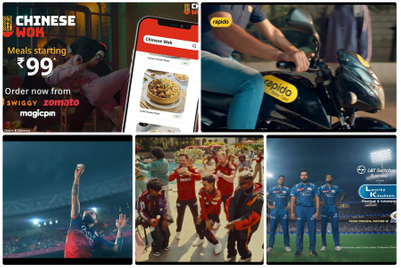
UTV Bindass and Synovate's youth study reveals that relationships with the opposite sex and their friends in the short terms and financial independence in the mid to long term are the key factors impacting today's youth. Titled 'Jigsaw', the study also won the best qualitative paper of the year - 2011 at the second MRSI (Market Research Society of India) seminar.
On the thought behind this round of study, Ravi Dixit, vice president – research and strategic planning, UTV Broadcasting said, “We wanted to understand what our core audience youth is tuned into. At UTV, we always listen to our audience and undertake studies before we roll out any major initiatives. Continuing with that tradition, we wanted to learn what are the changes that has come up amongst our audience following a similar study done in 2007 prior to the launch of the channel.”
He added, “The objective of the research was to understand everything about the Indian youth in a quirky manner and go beyond the conventional and to identify lifestyle, motivations, aspirations, attitudes, brand interactions, icons and stars that truly resonate with the youth of India.” For the research, the channel and the agency used secret Facebook groups, blogs, digital slam books, home visits and video diaries.
Elaborating on some of the findings and changes observed since the last study, Dixit said, “The amount of connectivity among the audience has gone up considerably over 2007, as a result content is consumed through online, TV and the information spread is more prevalent across several mediums at the same time. We term it as 'Social TV', where today's youth are consuming television and sharing their opinions about it on social media channels like Twitter and Facebook. Moreover, with these social media channels, youth have become more open about airing their personal opinions than ever before.”
Some of the findings from the study included: “Girls found body odor as the biggest put off, followed by a paunch followed by baldness; Girls are also taught to abuse in Hindi to keep eve teasers at bay especially in Hindi heartland towns - Girls are still discriminated in terms of freedom and evening curfew even in metros and even more so in mini metros. Another manifestation of breaking free for girls owns their own commute and Scooty came across as owning this feeling. College going girls even from conservative joint families provide for a two wheeler and girls simply love it.”
“Mobile has become a body part and the most important feature that they look for in their next phone is touch. Blackberry is the mass status symbol whereas iPhone is the top most status symbol but out of budget for the most. They prefer to keep two phones but dual-SIM phone fail to find favour with the class of 2011 for very practical reasons. Internet on mobile, is strongly preferred in free wi-fi zones a la Café coffee day, college campus and Nehru Place in Delhi (lots of offices).”
“Corruption was a big issue with smaller metro youth as they felt that their future will get impacted by it hugely as their ability to negotiate their lives in a world full of corruption will be compromised.”


.jpg&h=334&w=500&q=100&v=20250320&c=1)
.jpg&h=334&w=500&q=100&v=20250320&c=1)


.jpg&h=334&w=500&q=100&v=20250320&c=1)



.jpg&h=334&w=500&q=100&v=20250320&c=1)









